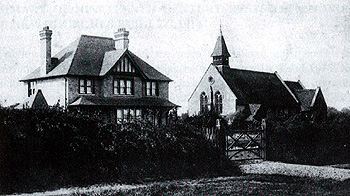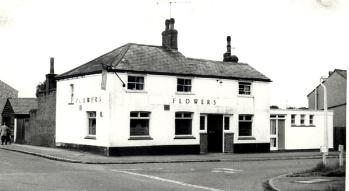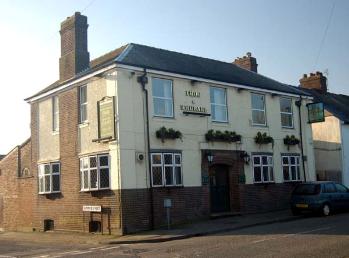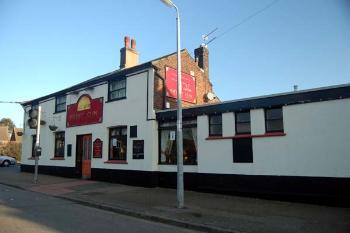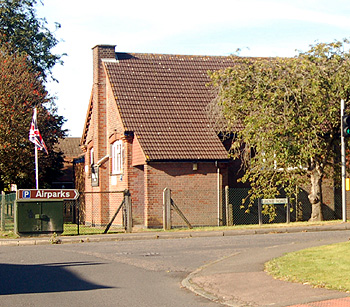Education in Slip End
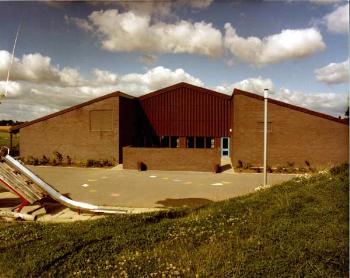
PY-PH126-1 new Slip End Lower School 1979
the new Slip End Lower School in 1979 [PY]PH126/1]
Caddington School Board was founded on 28 Sep 1875. School Boards were authorised under the 1870 Education Act and were an attempt to secularise education which had hitherto largely been the preserve of the Church of England leaning National Society and the nonconformist leaning British Society. Boards were elected by the rate payers of the parish and often, ironically, included such figures as the parson and the nonconformist minister.
The new board built a new school in Front Street for Slip End. It was built of plum coloured local brick with red brick and artificial stone dressings. It had a Welsh slate roof and crested red ridge tiles with casement windows. The first master of the new school, David Moon, wrote in the logbook [micf 38/3] as follows, beginning in Mar 1877: “Log Book only now obtained. The School was formally opened February 1st 1877 but School material not having arrived from London, the opening for work was postponed till till [sic] Monday Afternoon February the 12th when 148 children were entered upon the School Books”.
“John H.Blundell Chairman of the Board visited the School on the day of opening”.
“Much of the first week was spent in ascertaining the amount of Knowledge presented by the children, which I found to be very deficient. Roughly speaking about 4/7 (four sevenths) did not know thoroughly the Alphabet and they were equally backward in the Knowledge of Arithmetic and Writing. This estimate includes the Infant Sections. We opened School with myself as Master and Mrs.Moon as my assistant. Having no other help Mrs.Moon’s time has been spent in the Infants Room. Very many of the children of school age have either not attended school at all or have attended very irregularly their parents having kept them at home to assist in the sewing of straw hats. We need to be very firm in enforcing attendance of all, who by law should be at school”.
“John Blundell Esq. has paid a short visit to the school each week since the opening. A fair number of the scholars who knew not the alphabet at first, now are working at syllables and in writing are making simple combinations of letters and figures in arithmetic are adding simple numbers and Counting”.
It was not long before the firmness needed to enforce attendance had to be used. A fortnight later the headmaster was writing: “One or two children breaking Rule 6 of the School Rules (i.e. Children are not to stay away without obtaining leave from the Master except in case of sickness) the School Committee decided to meet here each Thursday to meet the parents of such, previously summoned, to ascertain the cause & to prevent the repetition of such offence. Messrs Blundell & Partridge met here on Thursday the 22nd & decided the cases of three offenders”.
John Hight Blundell was a Justice of the Peace who lived at Woodside House and, no doubt, bought the full force of the bench to bear on the offenders.
A separate Slip End Board Infants school was created in 1902, the year of the Education Act which did away with School Boards, bringing their schools under the control of the newly formed Local Education Authority (Bedfordshire County Council in the case of most of Bedfordshire, though Bedford Borough and Luton did run their own, separate systems, as quasi LEAs). Both schools thus became Council Schools in 1903. The infants were reintegrated into the main school in 1924.
A volume of School Inspector’s reports for most schools in the county [E/IN1/1] exists covering the period just before the Great War to just before the Second World War. In 1911 the Inspector reported on both mixed and infants schools and noted that: “…the whole of the work is characterised by care and intelligence. In spite of great interruption of work by epidemic sickness amongst the scholars, there is no noticeable falling off from the high level of efficiency reached in past years…” Two reports are extant for the InfantsSchool alone. In 1920 (average attendance 76) the Inspector commented: “Were the order better in this Department would be quite satisfactory in most respects, for the methods of teaching are good and the teachers work earnestly. But the children are not sufficiently engrossed in their work to make adequate progress and many of them, especially among the boys, are backward in consequence”. In 1923 (average attendance 73) the Inspector reported: “This school is taught in a very painstaking manner and the requirements of each child receive careful attention”.
The report for the mixed school in 1920 (average attendance 142) noted critically: “This Department is in a very unsatisfactory condition, it has been understaffed for the greater part of four years [due no doubt to conscription which was introduced in 1916]. From time to time the Headmaster has had the whole of the 140 or 150 children in his hands. Since the beginning of January last the two lower classes have been under the charge of eleven different teachers”. In 1922 (average attendance 125) things were better as a settled staff had been in place for several months and “the serious state of affairs to which reference was made in the last report no longer obtains”.
By the time of the next report in 1925 the infants were once more considered part of the main school and average attendance was now 171 though “More than half the children were absent at the inspection, through sickness” it was February. In Class 1 “The children are quite well behaved” nut history and geography could improve. These two subjects were worse in Class 2 “largely because the few children who know the work regularly call out the answers”, the class had been through several teachers in the previous few months. In Class 3 “The discipline…is lax, and must be improved”. These lax standards even applied to the Infants as their room was “often more noisy than need be”.
In 1927 both school and schoolhouse were valued under the 1925 Rating Valuation Act, the valuer found the schoolhouse in Front Street was “quite nice” and comprised two reception rooms and a kitchen downstairs with three bedrooms above; outside were a barn, earth closet, workshop and greenhouse. The next door school had an average attendance of 175 pupils but could hold 220; outside were a barn and earth closet and a shed, the school itself consisting of three large rooms.
The next Inspector’s report, of 1928 (average attendance 152), noted that the Headmaster had now been at the school for 25 years and was assisted “by a capable and enthusiastic staff, and the school taken as a whole is doing good work”. By the time of the 1931 report (average attendance 152), a new, novice headmaster had taken over eighteen months before and had “already effected some improvements”, rectifying the uneven distribution of the children into classes “when he discovers a weakness he finds the cause”. The Inspector did recommend that a garden be provided for the boys “and it does not appear that it would be difficult to get one”. Overall “There is every promise of further development and progress here”.
The final report came in 1936, when average attendance was 136 when things were “conducted conscientiously on somewhat formal lines….a large number of the children are very closely relate. This the Master considers explains the fact that there are two distinct strata of intelligence…” The boys received no practical instruction and the Inspector once again recommended a garden be purchased “if Woodwork also cannot be arranged. The girls are better off – in so far as they have Needlework: but the time for the Seniors, two hours a week, is short and they are handicapped by having no sewing machine”. Just as bad “There is no playing field in the village, A neighbouring land owner allows the use of a field some distance from the school, where the Head Master takes Games on Saturdays”. One good thing was that the modern tyranny of football had not yet developed. “The children have Athletic Sports, Cricket and Football, and do quite well in competition with a few other schools. This voluntary work should be recognised”. As for the fabric of the school: “The draining of the playgrounds has been greatly improved: but the offices [toilets] are unsatisfactory – those of the boys being positively bad. The cleaner’s work is well done. Now that the water has been laid on and a piece of land, adjoining the school, purchased, it might be possible to transform the offices into water closets, placing a large septic tank at some spot on this land which would not interfere with any future developments”.
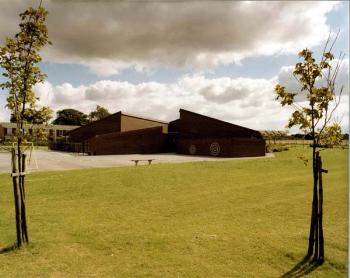
PY-PH126-1 another view of new Slip End Lower School 1979
the new Slip End Lower School in 1979 [PY/PH126/1]
During the Second World war the school house was used as a First Aid Point. The Education Act of 1944 made a number of changes to education and from 1946 the council junior schools in the county became County Primary Schools for pupils aged 5 to 11. Then in the 1970s Bedfordshire introduced comprehensive reorganisation the CP schools becoming lower schools for children aged 4 to 9 with a new middle school tier introduced for 9 to 13 year olds. A new Slip End Lower School was built in Rossway and was finished in 1979 and the old school was demolished.

